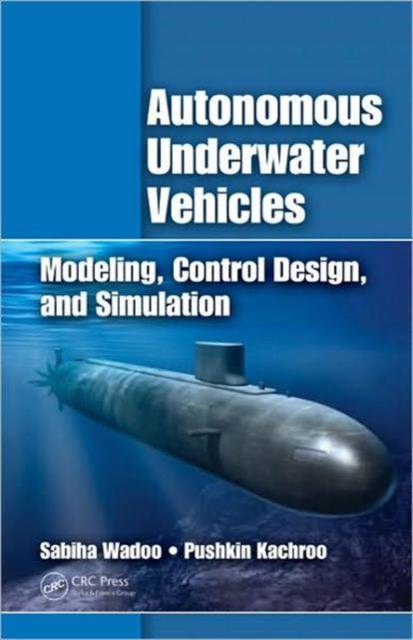
- Afhalen na 1 uur in een winkel met voorraad
- Gratis thuislevering in België vanaf € 30
- Ruim aanbod met 7 miljoen producten
- Afhalen na 1 uur in een winkel met voorraad
- Gratis thuislevering in België vanaf € 30
- Ruim aanbod met 7 miljoen producten
Autonomous Underwater Vehicles
Modeling, Control Design and Simulation
Sabiha Wadoo, Pushkin KachrooOmschrijving
Underwater vehicles present some difficult and very particular control system design problems. These are often the result of nonlinear dynamics and uncertain models, as well as the presence of sometimes unforeseeable environmental disturbances that are difficult to measure or estimate.
Autonomous Underwater Vehicles: Modeling, Control Design, and Simulation outlines a novel approach to help readers develop models to simulate feedback controllers for motion planning and design. The book combines useful information on both kinematic and dynamic nonlinear feedback control models, providing simulation results and other essential information, giving readers a truly unique and all-encompassing new perspective on design.
Includes MATLAB(R) Simulations to Illustrate Concepts and Enhance Understanding
Starting with an introductory overview, the book offers examples of underwater vehicle construction, exploring kinematic fundamentals, problem formulation, and controllability, among other key topics. Particularly valuable to researchers is the book's detailed coverage of mathematical analysis as it applies to controllability, motion planning, feedback, modeling, and other concepts involved in nonlinear control design. Throughout, the authors reinforce the implicit goal in underwater vehicle design--to stabilize and make the vehicle follow a trajectory precisely.
Fundamentally nonlinear in nature, the dynamics of AUVs present a difficult control system design problem which cannot be easily accommodated by traditional linear design methodologies. The results presented here can be extended to obtain advanced control strategies and design schemes not only for autonomous underwater vehicles but also for other similar problems in the area of nonlinear control.
Specificaties
Betrokkenen
- Auteur(s):
- Uitgeverij:
Inhoud
- Aantal bladzijden:
- 165
- Taal:
- Engels
Eigenschappen
- Productcode (EAN):
- 9781439818312
- Verschijningsdatum:
- 3/12/2010
- Uitvoering:
- Hardcover
- Formaat:
- Genaaid
- Afmetingen:
- 155 mm x 234 mm
- Gewicht:
- 358 g

Alleen bij Standaard Boekhandel
Beoordelingen
We publiceren alleen reviews die voldoen aan de voorwaarden voor reviews. Bekijk onze voorwaarden voor reviews.











